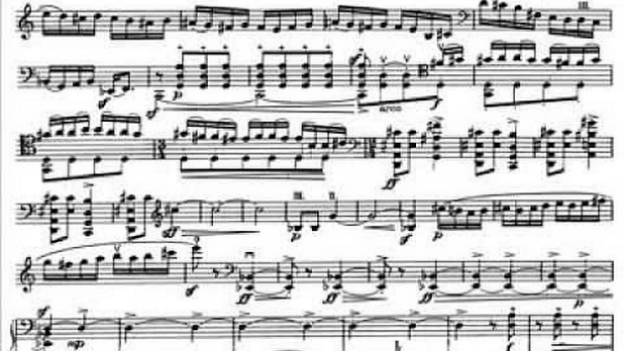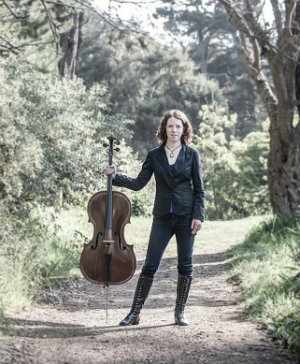
Hannah Addario-Berry, a Canadian cellist formerly with the Del Sol Quartet, is embarking on a big, well-timed adventure. She is celebrating the centennial of Zoltán Kodály's composition of Sonata for Solo Cello, Op. 8, and the work's use of scordatura, tuning strings a semitone down.
Addario-Berry is taking the sonata on a five-month-long tour, starting in San Francisco's Old First Concerts on July 31 and ending on Jan. 10 in Brookings, OR.
The tour consists of performances of the sonata and presentation of companion works by Lisa Renée Coons, Brent Miller, Eric KM Clark, and Alisa Rose — musicians described by Addario-Berry as dynamic young composers. For their works, they use the same altered tuning as Kodály, lowering the cello’s lower strings to deepen the tone.
Coons is a composer/sound artist, presently an assistant professor of composition at Western Michigan University. Miller is a composer, performer, and arts administrator in San Francisco. Clark is a Los Angeles-based violinist and composer, as well as co-founder and co-director of Southland Ensemble. Rose is a member of the genre-bending Real Vocal String Quartet, funk/bluegrass band Supermule, and the silent film scoring Club Foot Orchestra.

All four composers will participate in a pre-concert lecture at 7:30 p.m. on July 31. The concert will also be recorded next year, after the tour, by San Francisco-based producer Jason O'Connell.
Scordatura is centuries old — employed by Heinrich Biber, Pachelbel, Vivaldi, and Mozart, among others — and frequently used in Baroque literature. Biber's Sonata XI (Resurrection) combines scordatura and interchanging the two inner strings of the violin, attaining a tuning (from top string to bottom string) of G-g-D-d.
The Kodály sonata wavers between B Minor and B Major, the composer adjusting the two lower strings down a semitone to extend the instrument's tonal, dynamic and expressive range.
Addario-Berry's description of the Kodály sonata:
The work poses immense technical and musical challenges to the performer, using the extreme extent of the cello’s range and changing the tuning of the lower strings to deepen the tone. This deliberately altered tuning, or “scordatura,” enables rich harmonic possibilities.
The piece is at times dramatic, melancholy, exuberant, and haunting. The cello often doubles as soloist and orchestra, bowing long melodic lines while simultaneously plucking rhythmical accompaniments. These technicalities are not an end unto themselves, simply the means for carrying the listener on a musical journey to the heart of historical Hungary.
Kodály predicted that "in 25 years no cellist will be accepted who has not played it." In 1956, the sonata was a set piece for the Casals Competition in Mexico City.

